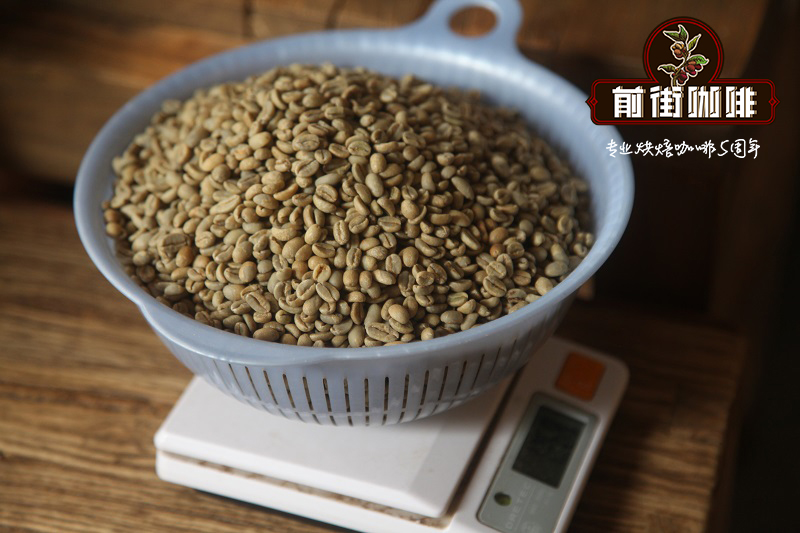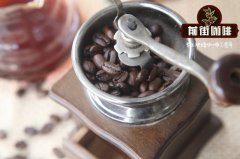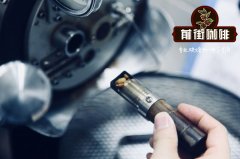What are the flavor and taste characteristics of AA washed beans from the Kay San Garry treatment plant in Kenya?

Professional coffee knowledge exchange more coffee bean information please follow the coffee workshop (Wechat official account cafe_style)
What are the flavor and taste characteristics of AA washed beans from the Kay San Garry treatment plant in Kenya?
Name of the manor: AA of Kay San Garri treatment Plant in Embu, Kenya.
Treatment: Kenyan washing
Beans: 100% Arabica SL28 SL34
Flavor: green plum, red grapefruit, tangerine, blackcurrant, unrestrained acid structure, solid fresh coconut water tail rhyme
AA washing plant in Kay Senggari, Embu, Kenya
Kenya Embu Kathangariri AA Washed
Green plum, red grapefruit, tangerine, blackcurrant, unrestrained and unrestrained structure
Kenya Qianbuyala Manor
Kenya (Kenya) is an important producer of boutique coffee in East Africa, but its output accounts for less than 5% of the global coffee market. It is auctioned every Tuesday in Nairobi, the capital, and exported to all parts of the world. Most of Kenya's coffee comes from small coffee farmers, each with about 0.5-3 acres of farmland, but local law requires farmers under 5 acres to join cooperative organizations. only a small number of local private organizations have the ability to set up estates.
Embu, an important coffee producing area on the southeastern slope of Kenya, sits at an average high altitude of 1650 meters. Nearly 70% of the population are small farmers, most of whom grow tea and coffee. It can be said that almost all coffee comes from local small coffee farmers. The treatment plant has been in operation since 1966 and is located in the foothills of Mount Kenya about 1750 meters above sea level. It carries out post-processing of coffee cherries for coffee farmers in neighboring towns. The annual temperature in the coffee producing area is 12-25 degrees, and the annual rainfall is 1600mm. Due to the fertile volcanic red soil, some farmers also grow tea.
Kay San Garri (Kathangariri) is the only processing plant located at the northern tip of Kenya. Kai San Garry is a self-sufficient processing plant. They leased a large part of the land to a co-operative whose rent is basically paid for the operation of the processing plant all year round. In this way, the percentage of profits can be increased to farmers who produce coffee. The batch was washed with water from nearby currents and dried on elevated African scaffolding after multiple artificial classifications.
Arabica SL28 and SL34
In 1930, the unique Kenyan varieties SL28 and SL34, which were cultivated and named by Scott Laboratories laboratory, were born under a good primary forest ecosystem.
SL28 has a mixed lineage of French missionaries, mocha and Yemeni Tibica. The goal of cultivating SL28 was to mass produce coffee beans with high quality and resistance to diseases and insect pests. Although SL28 did not produce as much as expected, copper and broad bean-shaped beans have great sweetness, balance and complex flavor, as well as significant citrus and black plum characteristics.
SL34 is similar to SL28 in flavor, with a heavier, fuller and cleaner finish than SL28, except for its complex acidity and great sweetness. SL34 has French missionaries, bourbon, and more Tibica ancestry. Dou looks similar to SL28, but is more adaptable to sudden heavy rain.
Kenyan coffee is graded according to particle size, and the common three grades are AA, AB and PB. AA sizes are 17 and 18 orders; AB are 15 and 16 orders; PB is a small round bean, usually a coffee fruit is made up of two coffee beans, round beans are only one bean in a coffee fruit. Although the classification is not the same, it does not mean that there will be a difference in flavor, but only a difference in particle size.
Treatment method (Coffee Processes)
It refers to the process of turning ripe red fruits into dried raw beans. Each treatment method has its own advantages and disadvantages, and is affected by the natural environment and demand of the producing area, so each producing area has its own suitable treatment method. This batch is solarization treatment.
Kenyan washing (Kenya Process)
After starting the process with the general water washing method, it is fermented naturally for 12 hours (mainly with a PH value of 4.5 and 4.8), and then 80% of the pectin layer is removed. After 24 hours of natural fermentation, the pectin layer is cleaned, then soaked in water for 24 hours, then dried and then put into the warehouse. Generally, the standing time of water washing and fermentation varies from 12 to 24 hours, while in Kenya, raw beans are soaked for as long as 48 to 72 hours, so the treatment method is often marked with Kenyan water washing (Kenya Process). Kenya's unique double fermentation washing method will improve the original acidity and cleanliness again, with rich berry tone, solid thickness, high sweetness and lively acidity.
Important Notice :
前街咖啡 FrontStreet Coffee has moved to new addredd:
FrontStreet Coffee Address: 315,Donghua East Road,GuangZhou
Tel:020 38364473
- Prev

What are the flavor and taste characteristics of the multi-door AA grade of Kenya Strange processing Plant?
Professional coffee knowledge exchange more coffee bean information please follow the coffee workshop (Wechat official account cafe_style) Kenya exotic processing plant multi-door AA grade what are the flavor and taste characteristics? The Strange treatment Factory (Kii Factory) is located on the hillside of Mount Kenya at an altitude of about 16001900 meters above sea level in Chiriaga. It has a strong flavor, rich layers and a solid feeling.
- Next

What is the flavor and taste of AA grade water washed beans from Qilinjia treatment Plant in Kirin Yaga, Kenya?
Professional coffee knowledge exchange more coffee bean information please follow the coffee workshop (Wechat official account cafe_style) what are the flavor and taste characteristics of AA washed beans from Kirin Yaga processing plant in Kirin Yaga, Kenya? How do you drink it? Product name: Kenya Kirinyaga Kiringa AA Washed production area: Kirinyaga processing plant: Kiringa Kirin Yaga production area grade
Related
- Detailed explanation of Jadeite planting Land in Panamanian Jadeite Manor introduction to the grading system of Jadeite competitive bidding, Red bid, Green bid and Rose Summer
- Story of Coffee planting in Brenka region of Costa Rica Stonehenge Manor anaerobic heavy honey treatment of flavor mouth
- What's on the barrel of Blue Mountain Coffee beans?
- Can American coffee also pull flowers? How to use hot American style to pull out a good-looking pattern?
- Can you make a cold extract with coffee beans? What is the right proportion for cold-extracted coffee formula?
- Indonesian PWN Gold Mandrine Coffee Origin Features Flavor How to Chong? Mandolin coffee is American.
- A brief introduction to the flavor characteristics of Brazilian yellow bourbon coffee beans
- What is the effect of different water quality on the flavor of cold-extracted coffee? What kind of water is best for brewing coffee?
- Why do you think of Rose Summer whenever you mention Panamanian coffee?
- Introduction to the characteristics of authentic blue mountain coffee bean producing areas? What is the CIB Coffee Authority in Jamaica?

